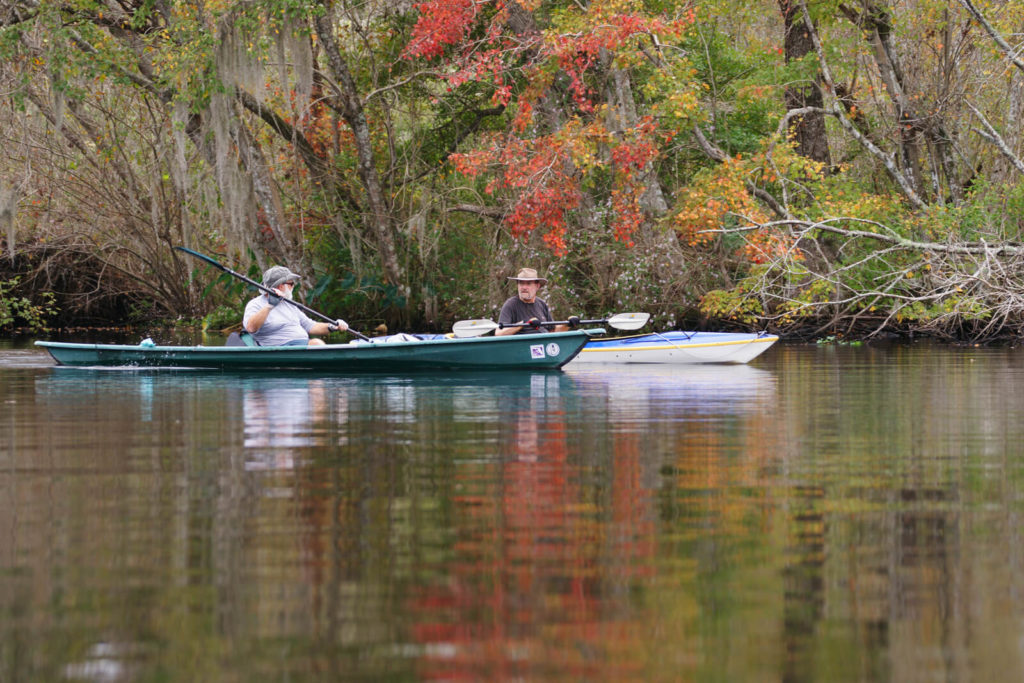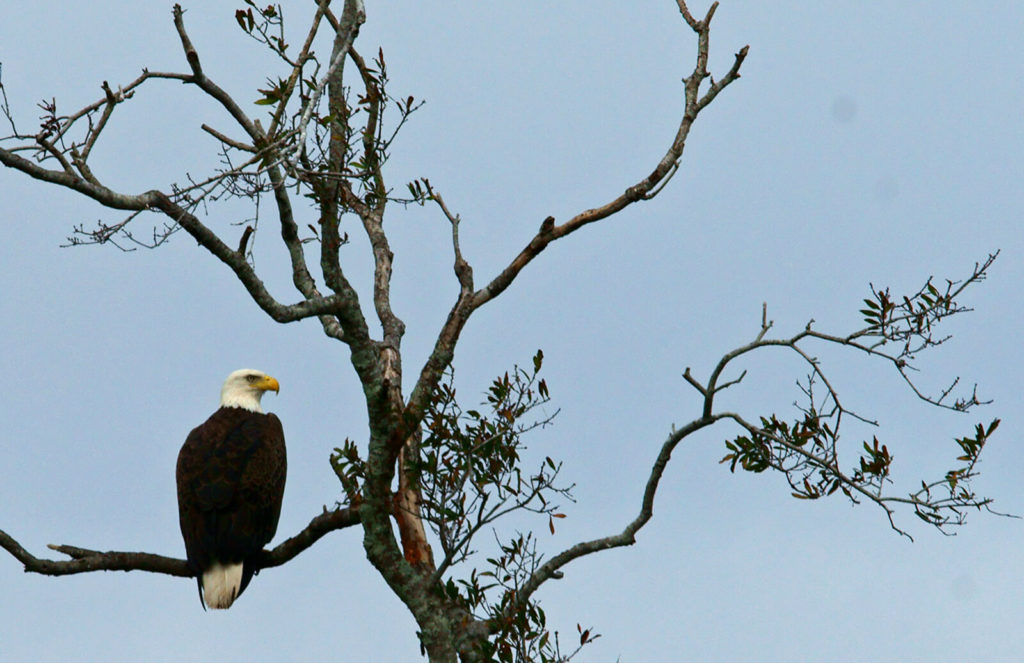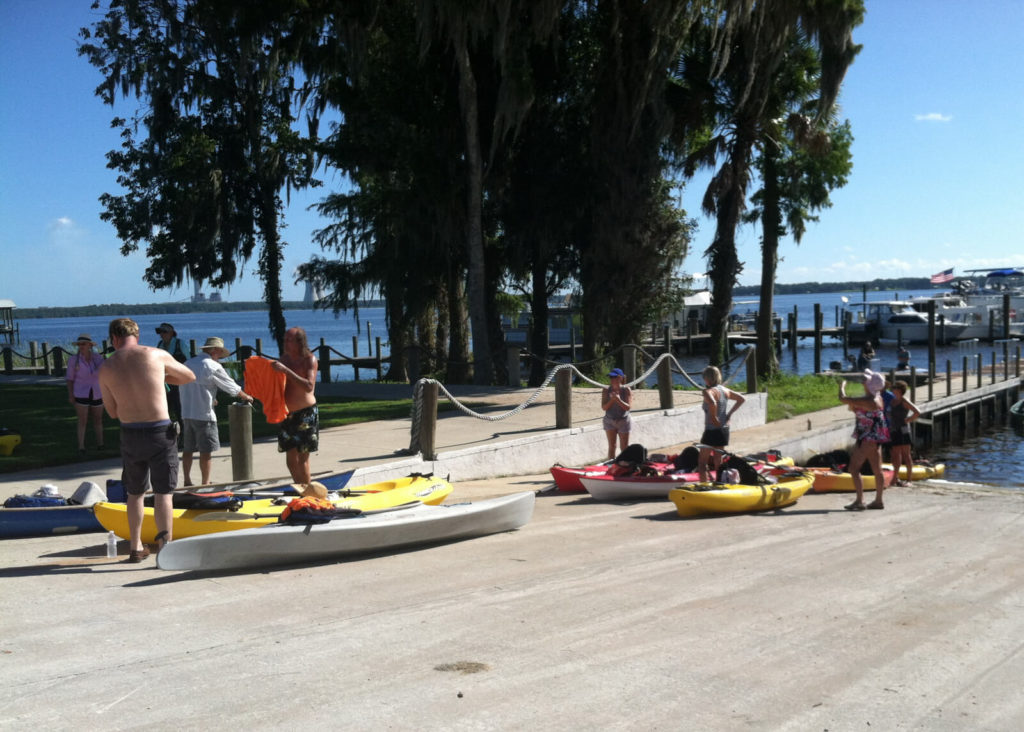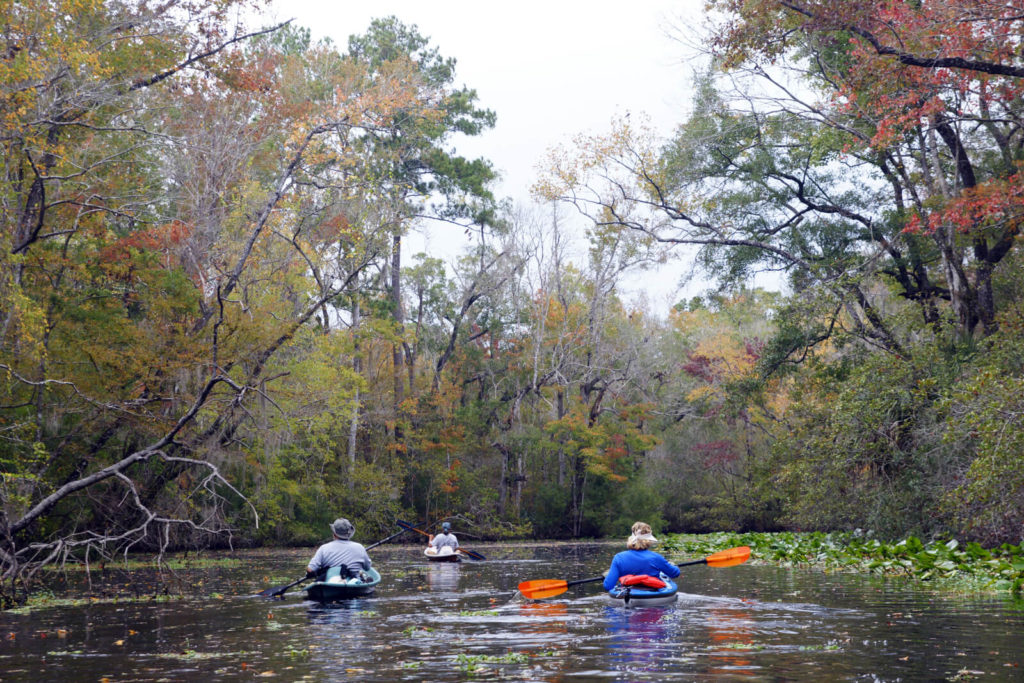03 Grays Creek / Rice Creek
Putnam County


Gray’s creek, which is 60 yards wide, and two fathom and a half deep; we went about 7 miles up it;
The Route
The Bartrams left Roll’s on the morning of January 30, 1766 and, after rowing 8 miles downstream, entered the mouth of Gray’s Creek, (Coordinates A) presently called Rice Creek, on the west bank of the St. Johns (Figure 1). According to John’s Journal, they found the creek to be about 60 feet across and 15 feet deep and meandering in a west by south direction. After progressing about seven miles, though the water was still 7 feet deep and more than sufficient for their shallow draft vessel, and more than 30 feet wide, they found the creek blocked with trees and snags and turned about to retrace their route back to the St. Johns (Figure 2).
Today’s explorer will find a Creek that is not much less wild than that encountered by the Bartrams in 1766. Except for the siting of the Georgia-Pacific mill at the end of a dredged basin 2.4 miles from the mouth, the only signs of modern civilization are the several road and power line crossings and structures associated with the two former discharge points for the Plant’s effluent. As with the Bartrams, navigation up the creek is limited by snags and down trees even though the creek is still sufficiently deep and wide far upstream. How close today’s paddlers are able to come to the point where the Bartrams turned about is determined as much by the tenacity of the paddler as it is by tree falls which become more numerous after major storm events and persist long after. Conveniently, seven miles up the creek is very close to its crossing by Highway 100 (Coordinates B). Consequently, the end point of their journey, if John’s estimate is to be believed, can be nearly reached by road and the crossing of Rice Creek by the Florida Trail.
The creek is also crossed by County Road 309D, locally named the Bardin Road, which crosses about six miles upstream from the mouth of the creek. Navigability of the waterway upstream of Georgia-Pacific’s former waste outfalls is not in any way maintained except by the occasional explorer or fisherman who may take it upon themselves to remove a snag or two in order to progress just a little farther upstream.
After exploring Gray’s Creek, the Bartrams crossed the river and made camp on the east shore. Some sources postulate that they may have progressed as far as Federal Point after leaving the Creek. However, rowing another 8 miles downstream after having rowed the 8 miles from Roll’s to the Creek and another 14 miles in the Creek, it is more likely that they were more than satisfied to make the one-mile crossing of the river to camp at Forrester Point; a very respectable and more reasonable distance for the party to cover on this day of their journey. That Forrester Point was their camping site on the night their trip up Gray’s Creek is further reinforced by the description of their route in John’s Journal entry for the following day, January 31, 1766 (See Bartram Trail Site 2).
Bartram Trail Site Marker 3a is located on the south side of the entrance of the Creek on the west shore of the River. Bartram Trail Site Marker 3b is located in a small unpaved parking area off the north side of Highway 100 at Palmetto Branch Road
January 30, 1766 Journal Entry
“Fine morning; set out from Roll’s, whose steward, Mr. Banks, was very kind to us, and seems to be a sober, careful, and agreeable man; we rowed 8 miles, crossing the river to Gray’s creek, which is 60 yards wide, and two fathom and a half deep; we went about 7 miles up it; its general course is west by south, and generally pretty straight, good high swamps on each side, though on the north side the pines come near, especially near the upper part, where the ground is poor; we could not pass near so far, as we had depth of water, by reason of many old trees fallen across the creek at 7 foot deep and 10 to 12 yards broad; great floods certainly come down it, for there were great banks of sand 4 foot, more or less high, drove on its banks; here is very good grass growing in the pine-woods knee high. We rowed down again crossed the river, and encamped at a great orange-grove, where thousands of orange-trees grow as thick as possible, and full of sour and bitter-sweet fruits; this is about four miles by land from Mr. Roll’s, though near 8 by water; he claims it in his 20,000 acres; some of it is good swamp, but mostly pine-land.”
Florida History Online “John Bartram’s Travels on the St. Johns River, 1765-1766.” May 2013.
http://www.unf.edu/floridahistoryonline/Projects/Bartram.html
Bartram, John. Diary of a Journey through the Carolinas, Georgia, and Florida, from July 1, 1765, to April 10, 1766, annotated by Francis Harper. Transactions of the American Philosophical Society, n.s., Vol. XXXIII, Pt. I. Philadelphia, PA, 1942.
Bruce, F.W. Assistant Engineer, US Army Corps of Engineers. St. Johns River to Lake Harney, Florida. 1908. The Portal to Texas History. University of North Texas. Nautical Chart of the St. Johns River.
http://texashistory.unt.edu/ark:/67531/metapth187523/m1/1/zoom/





